Tom Horn, a notorious figure of the American West, is remembered for his deadly skills as a scout and hired gun. His life took a dark turn with accusations of murder and a controversial trial that left many questioning his true nature. In this article, we explore the shadowy legacy of Tom Horn and his place in Western history.
Table of Contents
Introduction to Tom Horn: The Wild West Icon
Tom Horn was born on November 21, 1860, in Scotland, though his early life in Europe was relatively brief. His family emigrated to the United States when he was just a child. By the time Horn was around 10, they had settled in the American West, specifically in the Wyoming territory. This transition from the lush landscapes of Scotland to the rugged frontier of the American West marked the beginning of Horn’s remarkable and turbulent journey.in Scotland on November 21, 1860
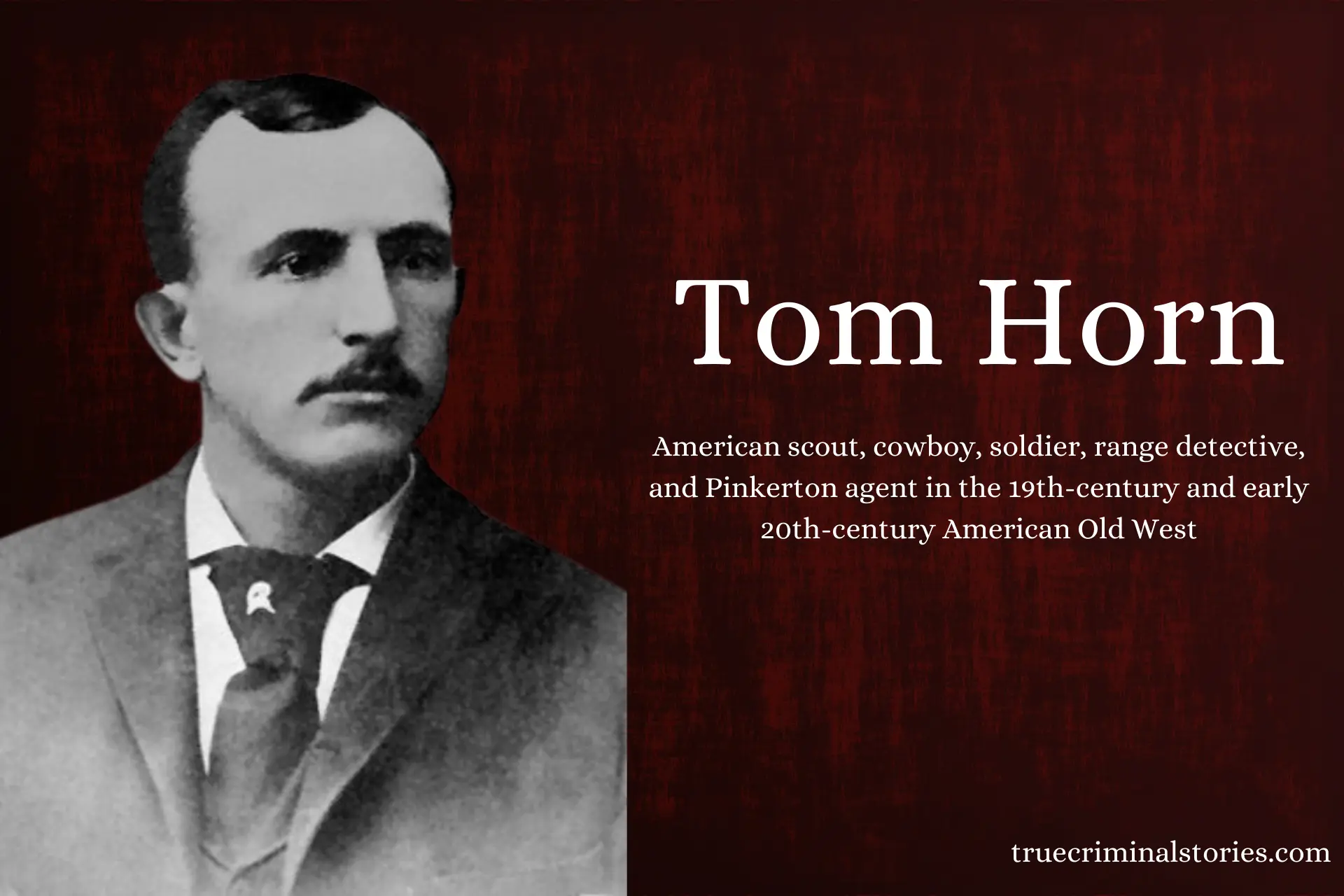
Explore more controversial figures like Brice Rhodes in triple murder cases.
The Evolution of Tom Horn: From Cowboy to Controversial Figure
Tom Horn, a detective, was a renowned figure in the American Old West. He was known for his work as a scout, Tom Horn, a cowboy, and a range detective. His life is shrouded in legend and controversy, with many questions remaining about his true character and actions.
Horn’s legacy remains controversial. Some view him as a ruthless killer who uses his skills to terrorize the frontier. Others see him as a victim of a flawed justice system, a man unfairly condemned for crimes he did not commit. The truth likely lies somewhere in between.
Believed to have committed 17 killings as a hired gunman throughout the West, Horn was convicted in 1902 of the murder of 14-year-old Willie Nickell near Iron Mountain, Wyoming. Willie was the son of sheep rancher Kels Nickell, who had been involved in a range feud with neighbor and cattle rancher Jim Miller.
You can also read about the Dixieland Mafia Hitman and their role in crime.
Tom Horn: The Apache Wars and Beyond
Horn served as a scout and interpreter for the U.S. Army during the Apache Wars, gaining valuable experience in the harsh realities of frontier life.
Growing Up in the Wyoming Frontier
Growing up in the Wyoming Frontier, Horn quickly adapted to the harsh realities of frontier life. The vast and often lawless expanse provided a challenging environment that would shape his future. By his teenage years, he had already begun to work as a cowboy, riding the range and managing cattle. The skills he developed during these formative years, including his ability to handle horses and navigate the rough terrain, were crucial in his later roles.
Legacy and Impact: Tom Horn’s Influence on Western History
As Horn matured, his career took several turns. He worked as a ranch hand and soon became involved in the region’s burgeoning cattle industry. His proficiency in handling cattle and his growing reputation led to him taking on various roles, including that of a scout. He worked for the U.S. Army and the Pinkerton National Detective Agency. His work during this period involved tracking outlaws and dealing with conflicts related to the cattle industry, laying the groundwork for his later notoriety.
The early years of Tom Horn’s life were marked by adventures and challenges that transformed him from a young immigrant into a skilled and formidable figure of the American West. His experiences as a cowboy, scout, and detective contributed to his reputation as a skilled and often controversial figure. These formative experiences in the rugged frontier environment played a significant role in shaping Horn’s future career and his complex legacy.
Explore more notorious cases, including Aileen Wuornos: Damsel of Death, for deeper insights into famous female killers throughout history.
Allegations of Murder: An Overview of Tom Horn’s Controversial Actions
Tom Horn, a figure of both admiration and notoriety in the Wild West, was embroiled in several murder allegations during his lifetime. His transition from a respected scout and detective to a controversial figure was marked by a series of incidents that painted him in a troubling light. This overview explores the accusations that led to Horn’s eventual downfall, including his alleged involvement in violent crimes that shocked the frontier community.
The Infamous 1901 Murder Case: The Mysterious Death of Willie Nickell
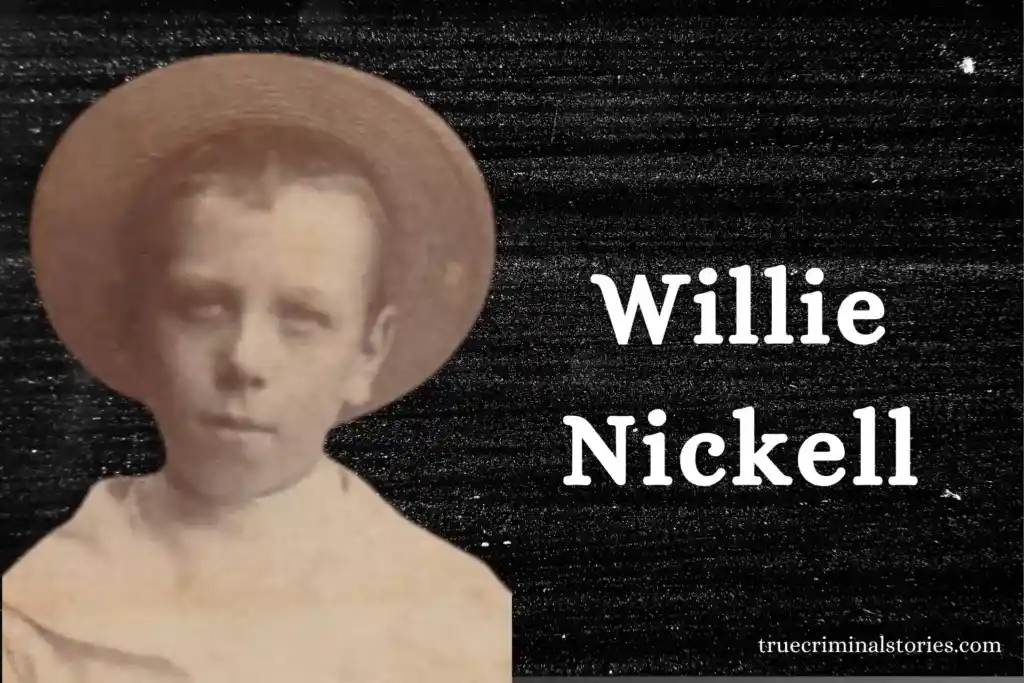
One of the most significant and controversial cases involving Tom Horn was the 1901 murder of a young boy named Willie Nickell. Horn was accused of killing Nickell, who was the son of a local rancher involved in a dispute with Horn. The case gained widespread attention due to the boy’s age and the brutal nature of the crime, fueling public outrage and casting a long shadow over Horn’s reputation.
The Circumstances of the Crime
Nickell was shot while riding his horse near his family’s ranch. Suspicion quickly fell on Horn, who was known to have been in the area at the time and had a history of violent confrontations.
Despite Horn’s protests of innocence, he was convicted of the crime and sentenced to death. The trial and subsequent execution sparked a national debate about the fairness of the justice system in the Wild West, with many questioning whether Horn had been wrongfully convicted.
The case against Horn was largely circumstantial, and there was no direct evidence linking him to the crime. However, Horn’s reputation as a tough and sometimes violent figure made him a prime suspect. The trial was also marked by accusations of prosecutorial misconduct and a biased jury.
Explore other fascinating stories of crime, such as Mitchelle Blair: Mom Who Buried Kids in Freezer, for a look at how desperate situations can unfold into chilling crime scenes.
Horn’s Suspected Role: Evidence and Eyewitness Testimonies
In the aftermath of the murder, various pieces of evidence and eyewitness testimonies pointed towards Tom Horn. Witnesses reported seeing a man matching Horn’s description near the crime scene, and some suggested that Horn had a motive due to ongoing conflicts with local ranchers. However, the evidence was circumstantial, leading to a contentious trial that divided public opinion.
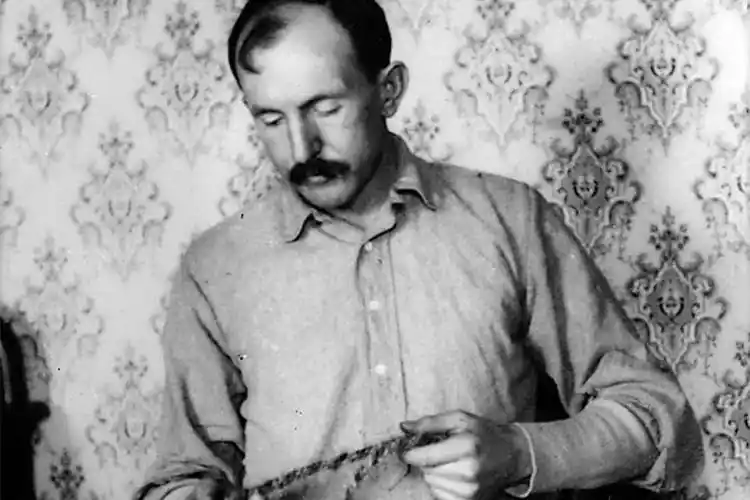
The Trial of Tom Horn: Legal Proceedings and Public Perception
Tom Horn’s trial was a high-profile event that captivated the public. The legal proceedings focused on the circumstantial evidence and testimonies linking Horn to the murder. Despite his denial of wrongdoing, the trial was marked by intense scrutiny and media coverage, which painted Horn as a ruthless figure. The trial’s outcome and its sensationalism contributed to Horn’s controversial legacy.
Murder for Hire? Theories Behind Horn’s Motives
Several theories have emerged regarding Horn’s potential motives for the alleged murders. Some suggest that Horn may have been involved in “murder for hire” or contract schemes, acting on behalf of individuals or organizations with vested interests in silencing those who opposed them. These theories propose that Horn’s actions were driven by financial gain or personal vendettas, adding a layer of complexity to his motivations.
The Verdict and Its Aftermath: Horn’s Conviction and Execution
Tom Horn was convicted of the murder of Willie Nickell in 1902 and subsequently sentenced to death. His execution by hanging took place on November 20, 1903. The verdict and Horn’s execution were met with mixed reactions—some saw it as justice served, while others viewed it as a result of a flawed legal process. Horn’s death marked a grim end to a life filled with both heroic and controversial deeds.
Public and Historical Reactions to Tom Horn’s Actions
Tom Horn’s alleged crimes and subsequent execution elicited a wide range of reactions from the public and historians. During his lifetime, opinions were sharply divided: some viewed him as a necessary enforcer of law and order, while others saw him as a cold-blooded killer. Over time, historical evaluations have continued to debate Horn’s true nature, reflecting the complexity of his legacy.
Reevaluating Tom Horn: Was He a Victim of Misjustice?
In the years following his execution, some historians and scholars have reevaluated Tom Horn’s case, questioning whether he was a victim of a miscarriage of justice. Arguments suggest that Horn may have been framed or unfairly judged due to his controversial background and the political climate of the time. This reevaluation seeks to understand whether Horn was truly guilty or if he was a scapegoat for broader conflicts.
Legacy of Violence: The Impact of Tom Horn’s Alleged Crimes on Western History
Tom Horn’s alleged involvement in violent crimes has left a lasting impact on the history of the American West. His story reflects the turbulent nature of frontier justice and the often blurred lines between law enforcement and criminal activity. Horn’s legacy serves as a reminder of the harsh realities of the Wild West and the complexities of historical narratives.
For more controversial cases, discover how Ted Bundy terrorized America.
How Did Tom Horn Die: A Tragic End
Tom Horn’s life ended dramatically and sombre on November 20, 1903. Following his conviction for the murder of Willie Nickell, a young boy from a local ranching family, Horn faced the ultimate penalty: execution. His trial, which had captivated public attention, was fraught with controversy and debate, reflecting the deep divisions in opinion about his guilt and the nature of his crimes.
Horn was executed by hanging in Cheyenne, Wyoming, a method commonly used at the time for capital punishment. His execution took place at the state prison in Cheyenne, Wyoming. As the date approached, there was a palpable tension in the community, with many eagerly awaiting the conclusion of a case that had polarized public sentiment.
On the day of his execution, Tom Horn was led to the gallows amidst a crowd of witnesses. Despite his protestations of innocence, the legal system had determined his fate. A mix of defiance and resignation marked Horn’s final moments. He maintained his innocence until the end, but the court’s decision was irrevocable. Tom Horn’s death by hanging was carried out with the standard procedures of the time, and he was pronounced dead shortly after the execution was performed. His execution not only brought an end to his controversial life but also sparked renewed discussions about his legacy and the justice of his conviction.
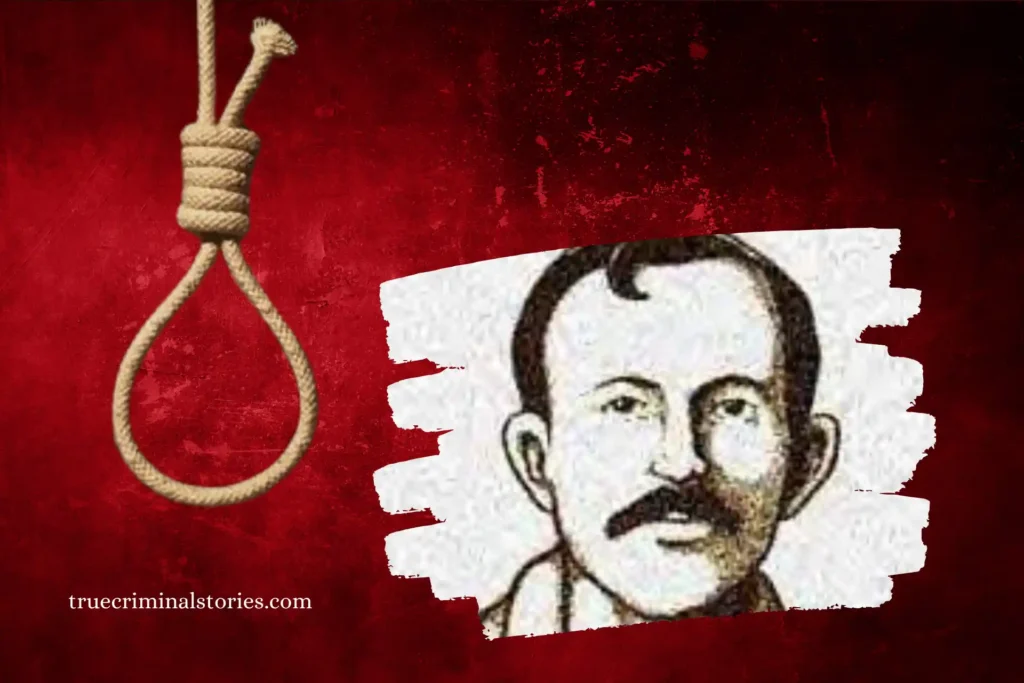
The aftermath of Horn’s execution was marked by mixed reactions. Some viewed his death as a necessary measure for justice, believing that it brought closure to a case involving a heinous crime. Others saw it as a tragic end to a man who had become a symbol of frontier life’s harsh and often unjust nature.
Book Related to Tom Horn
Read “Life of Tom Horn, Government Scout and Interpreter”
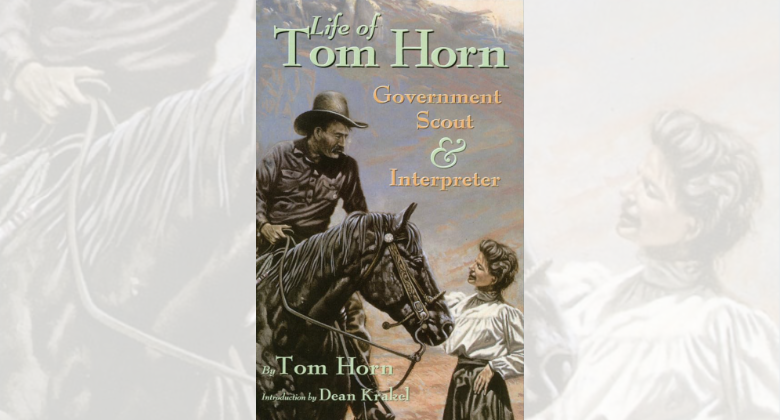
On November 20, 1903, the noose tightened around the neck of Tom Horn, a man celebrated for his service in the Apache Wars but now condemned as a murderer. Despite lingering doubts about his guilt, the “King of Cowboys” was hanged like a common criminal. His own words, published posthumously, fail to provide a clear defense, as Dean Krakel observes, stating the included evidence “doesn’t really add up to an explanation.”
Read” Tom Horn in Life and Legend”
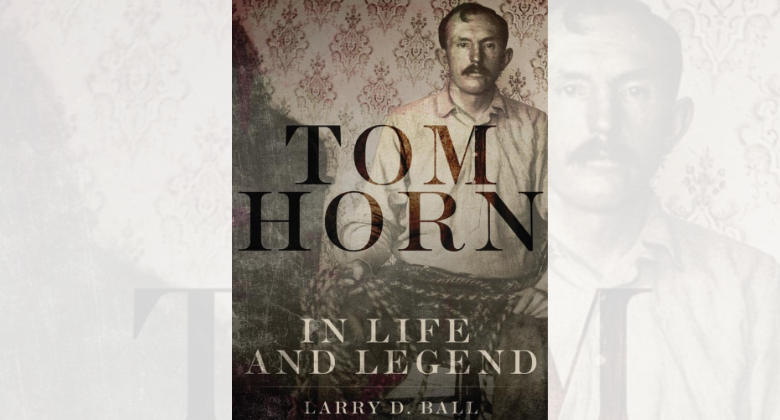
Tom Horn was a man of many faces: lawman, soldier, assassin. His life straddled the blurred lines of the Old West, leaving a legacy shrouded in mystery and controversy. In this definitive biography, Larry Ball, a distinguished historian, brings Horn’s story to life, unraveling the complexities of this captivating figure.
Conclusion
Tom Horn’s execution remains a significant chapter in the history of the American West. It encapsulates the complexities of law enforcement and justice during a tumultuous period, reflecting the often harsh and unforgiving nature of frontier justice. His death not only ended a life of notable and controversial achievements but also left a lasting impact on the historical narrative of the Wild West.
FAQs
What were Tom Horn’s last words?
“Ain’t losing your nerve, are you Joe?” said Horn.
Where did the Willie Nickell murder take place?
Believed to have committed 17 killings as a hired gunman throughout the West, Horn was convicted in 1902 of the murder of 14-year-old Willie Nickell near Iron Mountain, Wyoming.
What did Tom Horn look like?
He is described as being broad-shouldered, over 6′ tall, with a lean and muscular frame, and generally handsome but having a prominent nose and small penetrating eyes.
Was Tom Horn found guilty of the Willie Nickell murder?
Against all predictions, the jury found Horn guilty of first-degree murder. Despite appeals that went all the way to the state supreme court and the governor, Horn was hanged in Cheyenne in 1903. The trial and conviction of Tom Horn marked a major milestone in the hard-fought battle against vigilantism in Wyoming.
What does “Tom Horn Murder for Hire” refer to?
Tom Horn’s Murder for Hire refers to his role as a hired gunman in the American West. He was employed by cattle ranchers to eliminate cattle rustlers and other perceived threats, leading to his involvement in several killings, including the notorious murder of Willie Nickell.